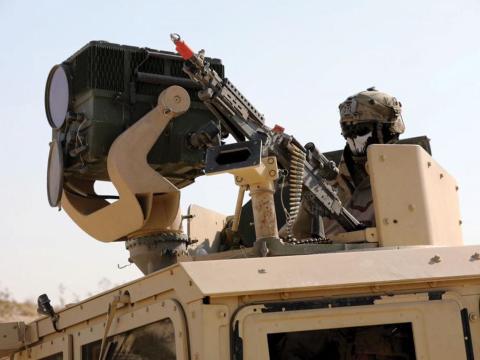Defense Reform a Timely Teammate With Commercial Technologies
Just one year after the Defense Department launched its Defense Reform Initiative, information technology is proving to be a vital player in this effort to bring the department into the next millennium. The U.S. military’s increasing reliance on information systems for operations and support has opened the door for the commercial sector both to enable change and to benefit from it.
Conventional wisdom long held that changing the way the Defense Department does business was akin to turning a supertanker with an oar. In the information age, however, both necessity and opportunity are proving to be mothers of invention. Change is coming more rapidly than anyone thought possible for two reasons. First, new information technologies are serving as effective enablers to develop creative acquisition and support initiatives. Second, declining budgets and the changing nature of the defense mission now mandate rapid implementation of the latest advanced communications and computing technologies. These factors have allowed information technologies to undergo a smooth transition from requirement to opportunity. The services are working to incorporate the latest commercial capabilities into their forces and their planning.
Just as the post-Cold-War mission has changed, so too has the department’s means to fulfill that mission. The information revolution occurred at exactly the right moment to equip the Defense Department with the necessary tools for maintaining military supremacy in an age that is increasingly defined by peacekeeping, humanitarian and littoral operations.
Among departmentwide activities, perhaps acquisition has undergone the most visible changes. Purchasing agents no longer need to fill out endless vouchers or sort through voluminous books for proper documentation. Now, they can buy items electronically, literally shopping, placing orders and arranging for delivery on-screen. The Defense Department estimates that hundreds of thousands of clothing items each month are acquired and distributed to troops this way, and this practice is going to expand substantially.
Even simple items such as credit cards are saving millions of dollars per year. By incorporating a familiar item into its change in business practices, the Defense Department is realizing savings in money and time without undergoing a painful cultural change. Deputy Secretary of Defense Dr. John J. Hamre estimates that 86 percent of all department micropurchases will be done using commercial credit cards. One contract payment operation handling more than $40 million per hour is realizing dramatic savings as users employ credit cards to process thousands of contract actions that are in the low hundreds of dollars.
For military operations, information technologies are the cornerstone of the force structure envisioned for the 21st century. Allied nations worldwide have embraced the concept of military supremacy empowered by advanced electronics in weapons used by forces linked in an omnipotent information network. Plans call for individuals in the theater of battle to serve as sensor and weapon platforms while functioning as nodes in the all-encompassing network. The rapid advances in high technology that characterize the private sector are the font of innovation for these information operations.
These developments did not take place merely because they emerged to dominate the commercial marketplace. The defense community realized the importance of these systems well before the end of the Cold War. Not only would high technology be essential to defeating forces that were superior in number, it would serve to reduce allied casualties substantially. In electronic and information warfare, technology might even serve to determine the outcome of a conflict before a conventional offensive is launched.
Of equal importance is the military’s ability to achieve complex mission goals with smaller forces. A decade ago, these technologies were described as force multipliers. Now, information technologies are recognized as the enablers for reducing the required number of personnel and materiel in the armed forces without reducing the chances for success.
Of course, commercial technology companies are central to the Defense Department’s efforts of reform and superiority through electronics. It is no secret that the department is looking toward the private sector for solutions. What industry must now do, however, is anticipate the department’s electronic commerce and information technology requirements. Most of these technologies and systems evolved through the tried-and-true laboratory known as the commercial marketplace. As new applications beckoned, companies responded with products and services. This process, however rapid, was measured, not sudden.
Now, the Defense Department is offering to advance these systems by leaps and bounds. When a nearly $300 billion enterprise embraces change as a modus operandi, it does so in no gradual manner. Steady evolution may have produced the technologies and approaches that the department is now embracing, but future developments likely will be revolutionary. The military must be on the cutting edge of this discipline in order to fulfill its mission amid budget constraints. Accordingly, it cannot wait for a wide range of electronic commerce or information technology products to prove their usefulness in the commercial marketplace.
By anticipating the Defense Department’s needs, the private sector can help lead it into the next millennium. Instead of being reactive to military electronic commerce and information technology requirements, industry can anticipate the direction of this multibillion-dollar entity and invent or tailor new products and approaches that serve its needs. And, without question, many of these innovations will have commercial applications. This win-win approach can only help guarantee the supremacy of allied military forces and ensure continued commercial success in the global marketplace.



